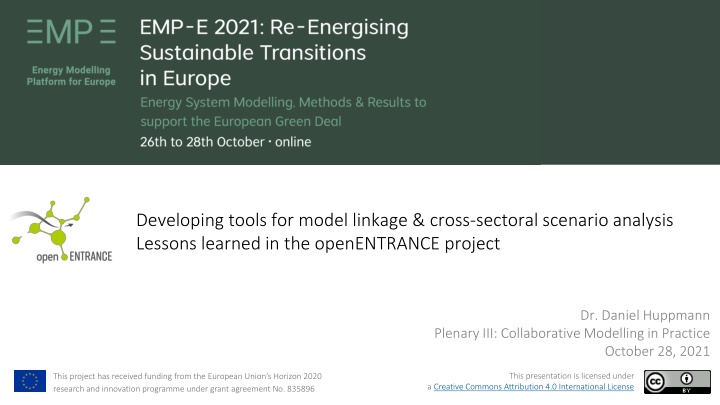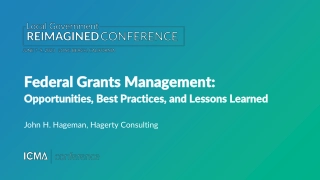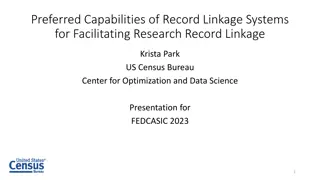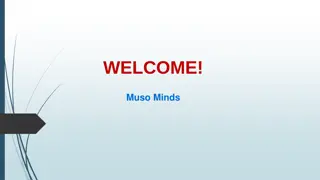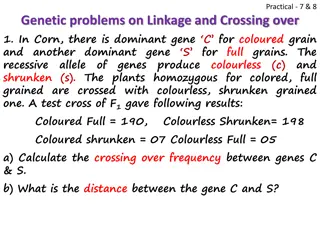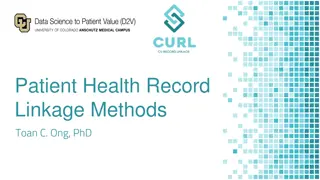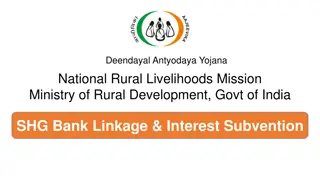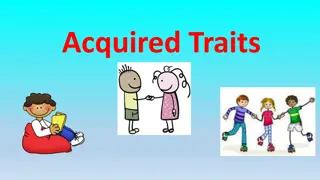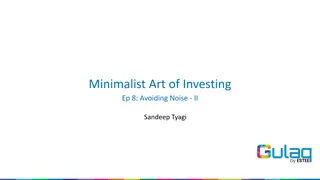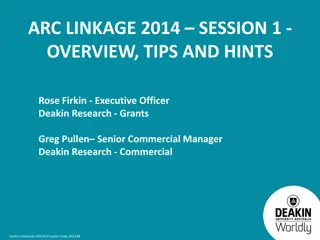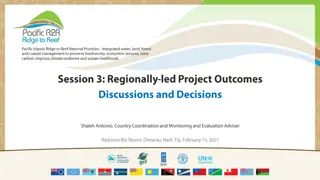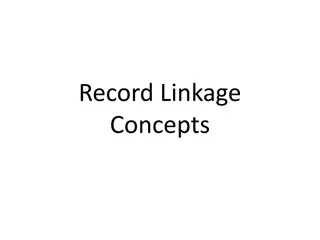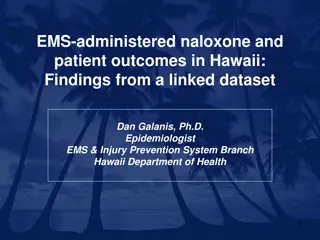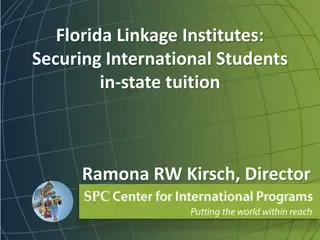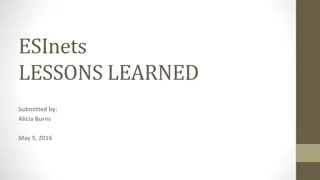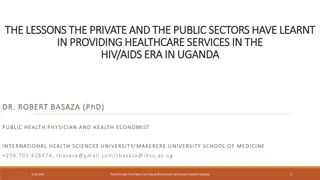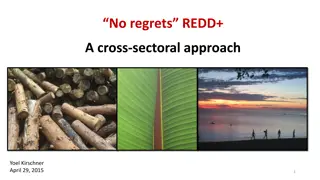Lessons Learned in Model Linkage & Cross-Sectoral Scenario Analysis
The openENTRANCE project under the Horizon 2020 initiative focuses on developing an open, transparent, and integrated modelling platform for evaluating low-carbon transition pathways in Europe. Insights reveal the importance of open-source collaboration and timely development of model-linkage workflows. Strategies such as adopting open and FAIR practices, and different approaches to model linkages, play key roles in enhancing research practices and knowledge sharing.
Download Presentation

Please find below an Image/Link to download the presentation.
The content on the website is provided AS IS for your information and personal use only. It may not be sold, licensed, or shared on other websites without obtaining consent from the author.If you encounter any issues during the download, it is possible that the publisher has removed the file from their server.
You are allowed to download the files provided on this website for personal or commercial use, subject to the condition that they are used lawfully. All files are the property of their respective owners.
The content on the website is provided AS IS for your information and personal use only. It may not be sold, licensed, or shared on other websites without obtaining consent from the author.
E N D
Presentation Transcript
Developing tools for model linkage & cross-sectoral scenario analysis Lessons learned in the openENTRANCE project Dr. Daniel Huppmann Plenary III: Collaborative Modelling in Practice October 28, 2021 This presentation is licensed under This project has received funding from the European Union s Horizon 2020 research and innovation programme under grant agreement No. 835896 a Creative Commons Attribution 4.0 International License
Background What did we aim to do, and what did we learn on the way The Horizon 2020 project openENTRANCE aims at developing, using and disseminating an open, transparent and integrated modelling platform for assessing low-carbon transition pathways in Europe. Observations and insights: Most modellers have understood that open-source work is the new normal But knowledge of open-source, collaborative development is not as widespread as it should be Modellers like to work on their models And they often wait too long to develop the model-linkage workflows necessary for projects like openENTRANCE Developing tools for model linkage & cross-sectoral scenario analysis Daniel Huppmann 2
Adopting open & FAIR practices A one-slide guide to apply better-practices in research Five best-practice steps to make your research open & FAIRv1.0 You may think that putting your work*on a website already makes it free & open. But that s not quite true follow these steps to implement best practice of #openscience! * data sets, text, tables, figures & illustrations, source code, scientific software, ... even #Horizon2020 deliverables Five best-practice steps to make your research open & FAIR v1.0 doi: 10.22022/ene/04-2020.16404 | url: openENTRANCE.eu 1.Open If you want your work to be read, used & shared by others, be explicit about it: For text, data, figures, ... use the CC-BY license | For code, visit choosealicense.com Daniel Huppmann et al., 2020 10.22022/ene/04-2020.16404 To make it easy for others to find and cite your work, get a digital object identifier (DOI) and add a recommended citation 2. Findable Please cite as: Daniel Huppmann et al., 2020 Depositing your work in an institutional repository or a service like zenodo ensures that your work is still available even after the end of the project 3.Accessible Using established community standards, data formats and software packages lets others quickly understand and use your work 4. Interoperable To make it easy for others to build on your work, make sure to assign a version number and relevant (machine-readable) metadata 5.Reusable This project has received funding from the European Union s Horizon 2020 research and innovation programme under grant agreement No. 835896 This page is licensed under a Creative Commons Attribution 4.0 International License Developing tools for model linkage & cross-sectoral scenario analysis Daniel Huppmann 3
Three approaches to develop model linkages Comparing approaches chosen by three projects: Data formats, a common language and workflows for model linkage The holistic approach: The Open Energy Ontology Develop a comprehensive ontology of the entire energy modelling domain including physical and social concepts https://openenergy-platform.org/ontology/ Open Energy Ontology The software-tool-based approach: The SENTINEL friendly data package Provide a solution to convert model-specific formats to common standards https://sentinel-energy.github.io/friendly_data/ SENTINEL friendly data package The dictatorial approach: The openENTRANCE nomenclature and data format openENTRANCE nomenclature and data format Require modelling teams to follow well-specified data format Develop common language as we proceed in the project Developing tools for model linkage & cross-sectoral scenario analysis Daniel Huppmann 4
The IAMC template for timeseries data A community standard for compiling scenario results The integrated-assessment community (IAMC) developed a tabular scenario data format for data exchange Used in IPCC Reports (AR6, SR15), Horizon 2020 projects, Adopted by ~50 teams globally A B C D E F 2005 462.5 G 2010 500.7 ... H 2015 Model MESSAGE CD-LINKS 400 Scenario Region World Variable Primary Energy Unit EJ/y 1 2 The Horizon 2020 project openENTRANCE is implementing an extension to cover sub-annual time resolution. Developing tools for model linkage & cross-sectoral scenario analysis Daniel Huppmann 5
A common nomenclature across research domains In the openENTRANCE project, we are developing a nomenclature across sectoral models based on the IAMC template Aim: develop a nomenclature in a structure that is intuitive and versatile Approach & features: Maintained on GitHub: native tools for discussion & version control Based on yaml text files: human-readable and easy to use in scripts & workflows Provides some additional features that are useful to researchers across domains (e.g., ISO2/ISO3-to-country mappings, NUTS hierarchy mappings) Includes an installable Python package nomenclature with useful features for validation, mapping-dictionaries, etc. Check out github.com/openENTRANCE/nomenclature for details! Developing tools for model linkage & cross-sectoral scenario analysis Daniel Huppmann 6
The pyam package A community package for scenario processing, analysis & visualization following best practice of collaborative scientific software development Use cases and features Data processing Aggregation, downscaling, unit conversion, I/O to xlsx, csv & frictionless datapackage Validation Checks for completeness of data, internal/external consistency, numerical plausibility Analysis & visualization Categorization and statistics of scenario ensembles, plotting library, Huppmann et al. pyam: Analysis and visualisation of integrated assessment and macro-energy scenarios. Open Research Europe 2021, 1 1:74 (https://doi.org/10.12688/openreseurope.13633.2) #pyam_iamc #pyam_iamc pyam-iamc.readthedocs.io Developing tools for model linkage & cross-sectoral scenario analysis Daniel Huppmann 7
Design principles of the pyam package We aimed to create a community package that is useful and that can serve as a best-practice example of open-source, collaborative work Intended users include modellers, researchers & analysists irrespective of Python knowledge Tutorials and a full-fledged documentation (and even a tutorial for R users) Two published manuscripts (2019, 2021) plus DOI s of each release via Zenodo Several active communication channels: a mailing list, Slack channel, GitHub repository, social media Based on the widely used pandas package for data analysis Supporting multiple data formats, file types, reference data sources, Adopt best-practice of open-source, collaborative scientific software development including continuous integration (test coverage ~ 95%) and release management Ambition: relying on a well-maintained, structured package instead of ad-hoc scripts will free up researchers time to do more research! Developing tools for model linkage & cross-sectoral scenario analysis Daniel Huppmann 8
The IIASA Scenario Explorer An interactive, versatile web user interface for model comparison projects and dissemination of results to researchers, policymakers & stakeholders Scope and features Make scenario results accessible including documentation Manage scenario results in model comparison projects Facilitate post-processing of scenario results Currently used in various projects The Scenario Explorer was initially developed for the IPCC s Special Report on 1.5 C. Visit the IAMC 1.5 C Scenario Explorer https://data.ece.iiasa.ac.at/iamc-1.5c-explorer Developing tools for model linkage & cross-sectoral scenario analysis Daniel Huppmann 9
Opening up the openENTRANCE Scenario Explorer We are inviting modelling teams to use the openENTRANCE Scenario Explorer as a central data repository for dissemination of their results As part of our mission to promote open science and transparency, the openENTRANCE project enables any modelling team working on European decarbonization scenarios to use the public openENTRANCE Scenario Explorer for dissemination of their results. Advantages: Make your data available via a state-of-the-art web user interface Compare results between openENTRANCE pathways and your studies Use the IIASA database infrastructure and related tools for further work Read more about the Data Submission Terms of Use on https://data.ece.iiasa.ac.at/openentrance Feedback? Are modellers interested in this offer? Developing tools for model linkage & cross-sectoral scenario analysis Daniel Huppmann 10
Re-using the openENTRANCE infrastructure in the ECEMF project The just-starting project ECEMF will build on the openENTRANCE tools The Horizon 2020 project ECEMF started in May 2021, bringing together a consortium of modelling teams Similar aims to openENTRANCE: Develop scenarios of European decarbonization policy and carbon neutrality Implement new tools for data analysis, visualization and model linkage Facilitate a community of European modelling activities Implementation strategy for tools and database infrastructure: Build on solutions implemented by openENTRANCE rather than re-invent the wheel Visit https://www.ecemf.eu for more information Developing tools for model linkage & cross-sectoral scenario analysis Daniel Huppmann 11
Thank you very much for your attention! Dr. Daniel Huppmann Research Scholar Energy, Climate, and Environment Program International Institute for Applied Systems Analysis (IIASA) Schlossplatz 1, A-2361 Laxenburg, Austria huppmann@iiasa.ac.at huppmann@iiasa.ac.at @daniel_huppmann www.iiasa.ac.at/staff/huppmann @daniel_huppmann www.iiasa.ac.at/staff/huppmann This project has received funding from the European Union s Horizon 2020 research and innovation programme under grant agreement No. 835896 This presentation is licensed under Creative Commons Attribution 4.0 International License a Creative Commons Attribution 4.0 International License
